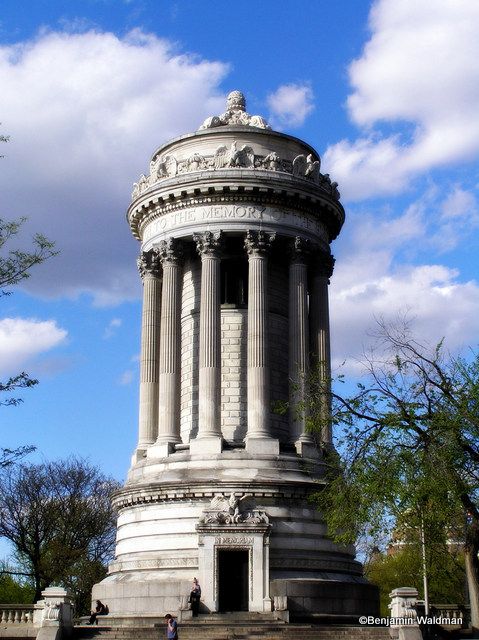A Salvaged Banksy Mural is Now on View in NYC
This unique Banksy mural goes up for auction on May 21st in NYC!


In honor of Memorial Day, today we’re looking back at the history of the white marble Soldiers’ and Sailors’ Monument, located at 89th Street and Riverside Drive, a majestic memorial to those who fought in the Civil War. Unfortunately, few have had the chance to marvel at its serene mosaic interior. The monument has been open to the public sporadically throughout the years, most recently as part of Open House New York (though one year the key was unable to open the rusted lock and access was canceled).
The New York Times was recently given rare access to what lies hidden behind the monument’s locked door.
Access was granted by the Riverside Park Conservancy which hopes to raise $500,000 in order to conduct a study on the structural condition of the memorial’s interior. Ideally, this will result in greater public access into the interior once more of a monument that has had a storied history.
But the Soldiers’ and Sailors’ Monument was not foreordained to be in its current location. In 1897, Mayor William Lafayette Strong originally designated Grand Army Plaza at 59th Street and 5th Avenue as the location for a future Soldiers’ and Sailors’ Memorial to be designed by Arthur and Charles Stoughton. It would consist of a 125-foot column capped by a statue of Victory designed by the famed sculptor Frederick MacMonies. Strong’s decision was not without its detractors, who began to look at other sites and designs for the proposed monument. As a result, Arthur and Charles Stoughton worked with Paul E. M. Duboy to design a new 80-foot high monument inspired by the Athenian Chorgaic Monument of Lysicrates.
A new site at the southern entrance to the Riverside Drive viaduct at 129th Street was suggested. This new site would connect the monument with Grant’s Tomb, a few blocks to the south, and provide for a grand entrance to Riverside Park. Veterans groups thought that this monument could be the start of a formal monument row dedicated to distinguished Civil War heroes, akin to the Literary Walk in Central Park.
Concerns regarding the proposed site forced the planned memorial’s relocation again and again. It was to be located in front of the Claremont Inn (at 127th Street and Riverside Drive), Madison Square, Mount Tom (the rocky outcropping named by Poe at 83rd Street in Riverside Park), Union Square and even the Battery. Finally in September 1899, the Department of Parks and other civic organizations agreed that the memorial would be located at 89th Street and Riverside Drive.
In December 1900, Governor Theodore Roosevelt laid the memorial’s cornerstone. The monument took one and a half years to complete and cost $250,000. It was dedicated on Memorial Day 1902, though a battlemented wall and grand staircase descending to a water gate on the Hudson was never completed.
By the 1950s, the monument’s condition had deteriorated so much that a fence had to be erected to protect the public from masonry falling off the monument. The Parks Department needed upwards of $2 million dollars in order to restore the crumbling landmark, but New Yorkers were divided at the prospect of spending so much money in order to preserve the City’s past in those pre-Landmark Law days. Suggestions to replace the aging monument ranged from a playground to a space-aged style shaft. Thankfully, by 1960 the City set aside money to restore the monument and it was rededicated two years later. It was finally designated an official New York City Landmark in 1976.
Next, take a look at Memorial Day through the ages in vintage photographs.
Subscribe to our newsletter